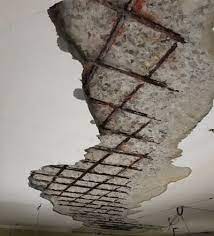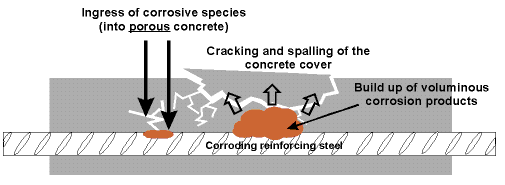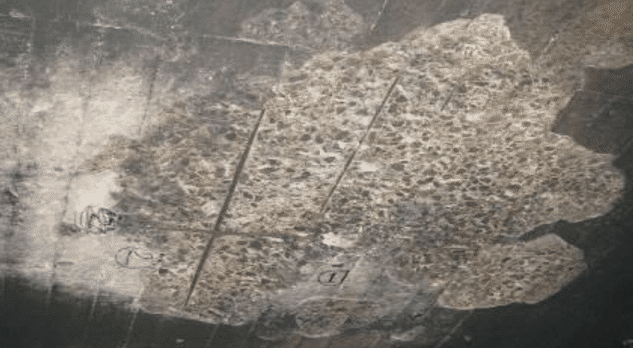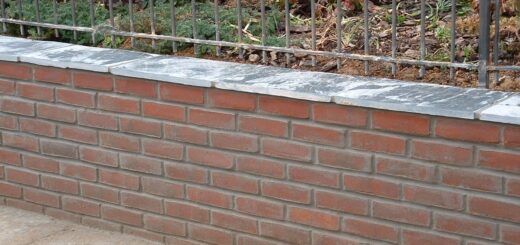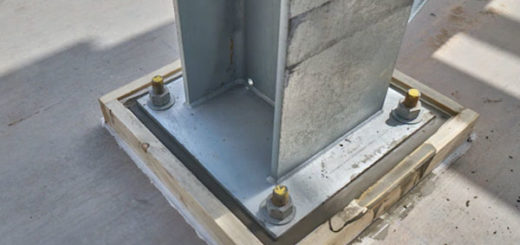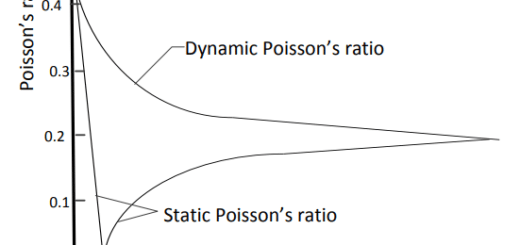What is Spalling of Concrete – causes and repair
Spalling of concrete is one of the major issues that affect the durability of reinforced concrete structures. It causes due to many reasons that we discuss in the latter part of this article.
Normally, the spalling occurs in old structures. It starts when the age of the structure is between 10 -20 years generally. There are more indications such as cracking of the concrete, increasing volume of the concrete, etc. spalling occurs.
What is Spalling?
Spalling is breaking material into a pieces. Concrete spalling is the separation of part of concrete from the main structure by cracking or expanding concrete.
At the initial stage, there will be surface cracks in the concrete and with time, movement of the concrete surface can be observed. If this can be identified at the initial stage, we could minimize the damage to the structure.
Effect of Spalling Concrete
Spalling adversely affects the structures and therefore especially attention shall be made to avoid the structure causing damages by spalling. The following can be considered as the main issues.
- Durability of the Structure
When it deteriorates the concrete and the reinforcements, it affects the design life of the structures. As a result, the durability of the structure reduces.
- Reduction in the Structure Strength
Damage caused to the cover zone of the concrete does not affect the strength of the structural member significantly. However, corrosion of the reinforcement and determination of the concrete could make a significant effect on the structural capacity of a member.
- Structural Failures
If the strength of the structural members is affected, it could lead to a structural failure if this issue is not attended to timely and spalling concrete repair is not done on time.
- Spalling at Expansion Joints
Failures of expansion or movement joints could occur.
- Esthetic Appearance
If the spalling concrete occurs, it affects the appearance of the structure.
Concrete Spalling Causes
There are many causes of spalling of concrete that result in concrete spalling.
Let’s discuss each type of concrete spalling causes.
- Freeze-thaw Cycle
- De-icing salt
- Poor Finishing techniques
- Improper Curing of Concrete
The curing of concrete is done to improve the durability of concrete and to avoid the cracking of the concrete. Inadequate curing could cause weak concrete in the cover zone which could support the moisture and air to reach the reinforcement. This will lead to reinforcement corrosion and an increase in the internal volume result spalling of concrete.
If we prevent corrosion of reinforcement, these types of failures could not occur.
- High temperature
Variation of the temperature of the concrete and increase in the temperature of the concrete during the daytime causes cracks in the concrete. It could lead to the separation of the cover zone concrete from the reinforcement.
- Inadequate compaction of concrete
Inadequate compaction of the concrete weakened the concrete quality and affected the durability and strength of the concrete. As a result of that concrete spalling could occur.
- Fire Exposure
During a fire, the temperature of the concrete increase may be up to about 7000C. This value may depend on many factors. However, the rise of the temperature in the concrete result in spalling of concrete.
- Corrosion of reinforcement induced by carbonation
Corrosion of reinforcement could cause due to carbonation, chloride attacks, sulfate attack. With the corrosion of reinforcement, the internal column around the reinforcement increases. The development of corrosion-induced cracks in a certain area will result in concrete spalling.
- Corrosion of reinforcement induced by chloride attacks
- Corrosion of reinforcement induced by sulfate attack
- Expansive effect caused by the Alkali Silika Reaction
- Inadequate Cover to the Reinforcements
Adequate cover to the reinforcement shall be maintained based on the exposure condition of the structure. If there is no adequate cover, it will lead to reinforcement corrosion which leads to spalling of concrete.
For marine environments, we maintain cover to the reinforcement around 75mm and for the pills, we keep about 100mm cover. In other structures, where there are major environmental issues connected to the durability of the structure, the cover could be maintained in the range of 20mm -50mm depending on the element type and ground conditions.
- Low-quality concrete in Cover Zone
- Bad concrete mix
- Environment pollution
- High water Cement Ratio
Spalling Concrete Repair
There are three main categories of spalling repairs. Namely, they are as follows.
- Patch spalling repair- preparing only the damaged area.
- Overlay repair – having an overlayer through the area.
- Replace completely.
Out of the above types of spalling repairs, the patch repair is more common as mostly, at the initial stages, the could be spalling of concrete in certain areas only. If we do not take action, the situation will worsen and we may have to do overlay or complete replacement.
- Properly clean the spall concrete area
- Completely remove the loosened concrete
- Clean the reinforcement – all the rust shall be removed and where necessary mechanical means or chemicals shall be used for cleaning.
- Apply anticorrosive to the reinforcements – this is recommended for spalling repair work.
- Apply the suitable concrete mix
It is recommended to nonshrink construction grout for the spalling concrete repair work. The material properties shall be checked before the repair.
Mixing of the construction grout shall be done by strictly following the supplier’s specifications. Water content shall be in accordance with the technical specification.
- Finishing shall be done as required and it could be done manually. Paint may be applied from the required color when the concrete gets dried.
- Curing the nonshrink concrete is a must. It gains strength in a shorter period of time. Therefore, it is sensible for the divination of the temperature. In addition, fast drying of concrete leads to shrinkage cracks. Therefore, a suitable method of curing shall be done. Covering the concrete with gunny bags, applying curing agents, etc. could be done.

